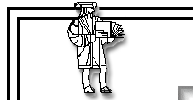|
|
The Final Obstacle
Even if a forger can make a fairly convincing set of dies or make moulds and cast good copies, he has a few other problems to overcome before his fakes will become convincing :
1) For the person cutting hand-cut dies, within any one series of ancient coins there were a very limited number of ancient celators (the latin name for a diecutter). Each of these celators will have had his own unique style and there was no reason in ancient times for them to try to hide their styles. A modern forger trying to cut a die must do more than make a die that will strike coins that have an ancient style to them, they must accurately capture the style of one of the exact celators who cut dies for the type of coin he is copying. This adds another level of compexity.
2) Most ancient coins are incompletely struck. Parts of the design will run off the edges or for other reasons not be visible on the coin. A person hand cutting dies must be aware of what is missing and be able to accurately re-create the missing parts or his die will fall short for this alone. Mechanically copied, cast or impressed dies can only capture what is on the coin being copied, so if any part of the design is not there, it will also be missing from the false dies.
3) There are several different methods by which the blank flans for ancient coins could have been produced. Within any one series of coins there will generally only be one method used. Once one knows what to look for, it is fairly easy to determine what method was used to make the flan for any particular coin. The modern forger must not only capture the style and design of the coin accurately, he must make his flans by the same method used to make flans for the original coins.
4) Ancient metal has a look, feel and internal structure that results from great age. It has to do with things that happen to coins during burial over long periods of time. One example would be the patinations seen on most ancient bronzes. Another would be that within certain series of coins the metal will become highly crystalline in a way that affects how the coin will sound if you try to "ring" it. The Lysimachos tetradrachm illustrated and discussed under "Mechanically-Produced dies" would be a slightly more difficult coin to detect except that when struck it "rings true", resonating like a bell. A genuine Lysimachos tetradrachm would never sound like that and that alone was enough for us to condemn that particular coin.
These were just four of many such factors, and we have intentionally left some of them off. What we hope we have helped the reader understand, is that the forging of ancient coins is a highly complex undertaking. Creating the image of a coin is only the first thing the forger needs to do to be successful, and even that is very difficult. Most forgers are not even aware of what else they need to do, and so do not even make the attempt. Because of this, there are good forgeries, but virtually no perfect ones.
One should also realize, that spotting fakes takes an in-depth knowledge of ancient coins, and that knowledge only comes from long study and experience in handling the real thing. If one undertakes to study it seriously, it will take many years to master it. If one does not study it in depth, it canl never mastered. This is why experienced dealers will always be the average collectors first line of defence against forgeries.
Because truely great forgery is so difficult, most forgers do not attempt to fool the true experts who are looking carefully. They are happy if they can fool the average collector, or an expert in a moment of carelessness, just lon g enough to collect the money and run. That the fake will be exposed later is of no concern to them.
Then one must consider modern collector coins of the 19th and 20th century. They are machine-made on machines that can still be located today. Stuck from machine cut dies, for which the die cutting equipment can still be located. Made from alloys easily obtainable by melting down common coins of the same series. And there is no need to recreate patinations or an "old metal" look. Considering that modern rarities are generally more valuable and easier to sell then ancient rarities, and less likely to be closely examined, what do you think the really talented forgers will turn their sights to.

Next page: SOME OF THE GIVEAWAYS
Copyright © 2016 R & T Enterprises Ltd.
|

